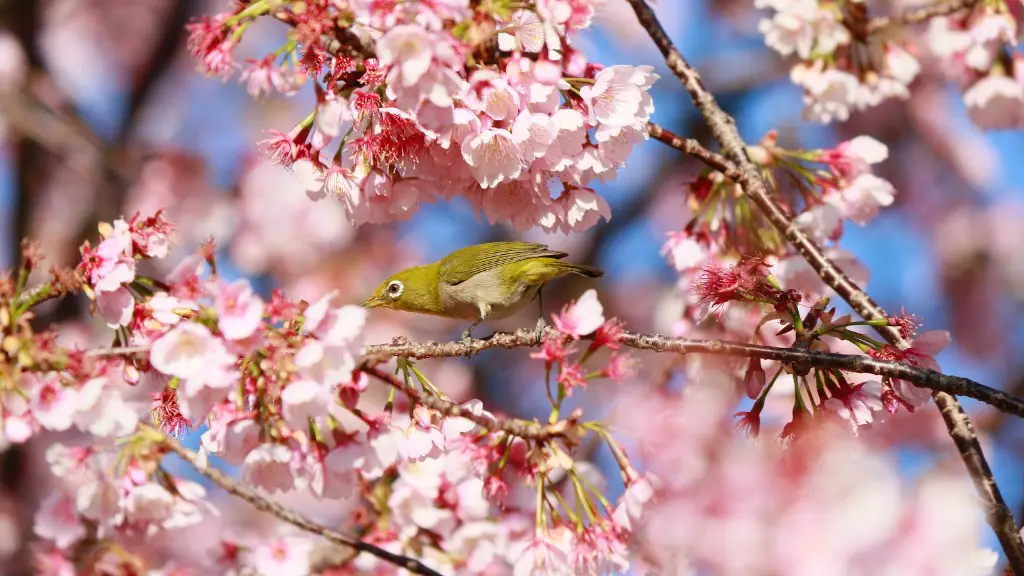Nutrition
Fertilizing a cherry tree correctly is the best way to ensure it receives the nutrition it needs to thrive and produce healthy, delicious fruit. The type of fertilizer used, how much and when to fertilize should be based on the tree’s specific needs. The amount of nitrogen, phosphorus and potassium in the fertilizer should be balanced according to a tree’s particular needs. The amount of fertilizer used should also be based on the size and age of the tree as well as the soil composition in the planting location.
Timing
When to fertilize a cherry tree is important to avoid over or under fertilizing. Generally speaking, cherry trees should be fertilized annually in the early spring. This is when they start to get ready for the new growing season. Fertilizing them twice a year, once in spring and then again in fall, is also beneficial. In the fall, the fertilizer should be higher in phosphorus and potassium, as this will help prepare the tree for winter.
Soil Test
Before fertilizing a cherry tree, the soil should be tested to determine its nutrient composition. This is the best way to know what type and amount of fertilizer are needed for optimal health. The soil test will provide a comprehensive report on exactly what nutrients the soil has and what elements are lacking, so you can choose the fertilizer that is right for your tree.
Organic Fertilizer
Organic fertilizers are much more beneficial to cherry trees than synthetic ones, as they are more easily absorbed and provide a steady release of nutrients over time. Organic fertilizers are more expensive than synthetic ones, but they are worth it in the long run as they promote healthy, sustained growth.
Watering
After fertilizing a cherry tree, it is important to water it thoroughly. This will help the fertilizer to reach the roots and will also help to activate the nutrients in the soil. As a rule, cherry trees should be watered deeply once every week to ten days, depending on the weather, until the tree is established.
Pruning
Pruning is important for cherry trees, as it helps to keep them healthy and productive. Pruning should be done in late winter, after the tree has gone dormant, to shape and discipline the growth of the tree. Pruning also helps to reduce pest and disease pressure, as well as create more air flow around the tree.
Pest and Disease Control
Pests and diseases can be a major problem for cherry trees, so it is important to take steps to prevent them as much as possible. This can include things like keeping the tree pruned, keeping the soil healthy and free of debris and pests, and spraying the tree with natural, organic insecticides and fungicides if necessary.
Organic Matter
Adding organic matter, such as compost or well-rotted manure, to the soil around the tree can help to improve the soil’s fertility, structure, and moisture retention. This is an important step to take, as it can help to create a healthy environment for the tree and will also help to prevent problems such as pests and disease.
Drought Management
Cherry trees are vulnerable to drought stress, so it is important to take steps to manage water availability. This includes things like mulching around the tree to conserve moisture, choosing a location with good drainage, and providing supplemental irrigation during especially dry periods.
Fertilization Frequency
The frequency of fertilization should be based on the specific needs of the cherry tree, as well as its age, size and location. Generally speaking, fertilizing once a year in spring is sufficient, but more frequent fertilization may be necessary if the tree is young or the soil is especially poor.
Soil Improvement
If the soil is sandy or poor in organic matter, it may be necessary to amend it before fertilizing. This can include things like adding compost, manure or other organic matter to improve the soil structure and fertility. This is an important step for creating a healthy environment for the cherry tree and should be done before applying any fertilizer.
Repotting
If a cherry tree is planted in a pot, it should be repotted every two to three years. The potting soil should be replaced with nutrient rich soil, which will help to provide the tree with the nutrition it needs to thrive. It is also important to make sure that the tree has adequate drainage, as this will help to prevent the roots from becoming waterlogged.
Light and Temperature
Cherry trees need plenty of sunlight to produce healthy fruit, so planting them in a location that receives at least six hours of direct sunlight per day is ideal. They also need moderate temperature in order to produce fruit, so it is important to choose a planting location that stays relatively cool in the summer and warm in the winter.
Time of Planting
In order for a cherry tree to become established quickly, it should be planted in the early spring. If planted in the fall, the tree may suffer from poor growth due to cold temperatures. While it may take a few years for the tree to become fully established, planting it in the early spring will help it to get off to the best start.



